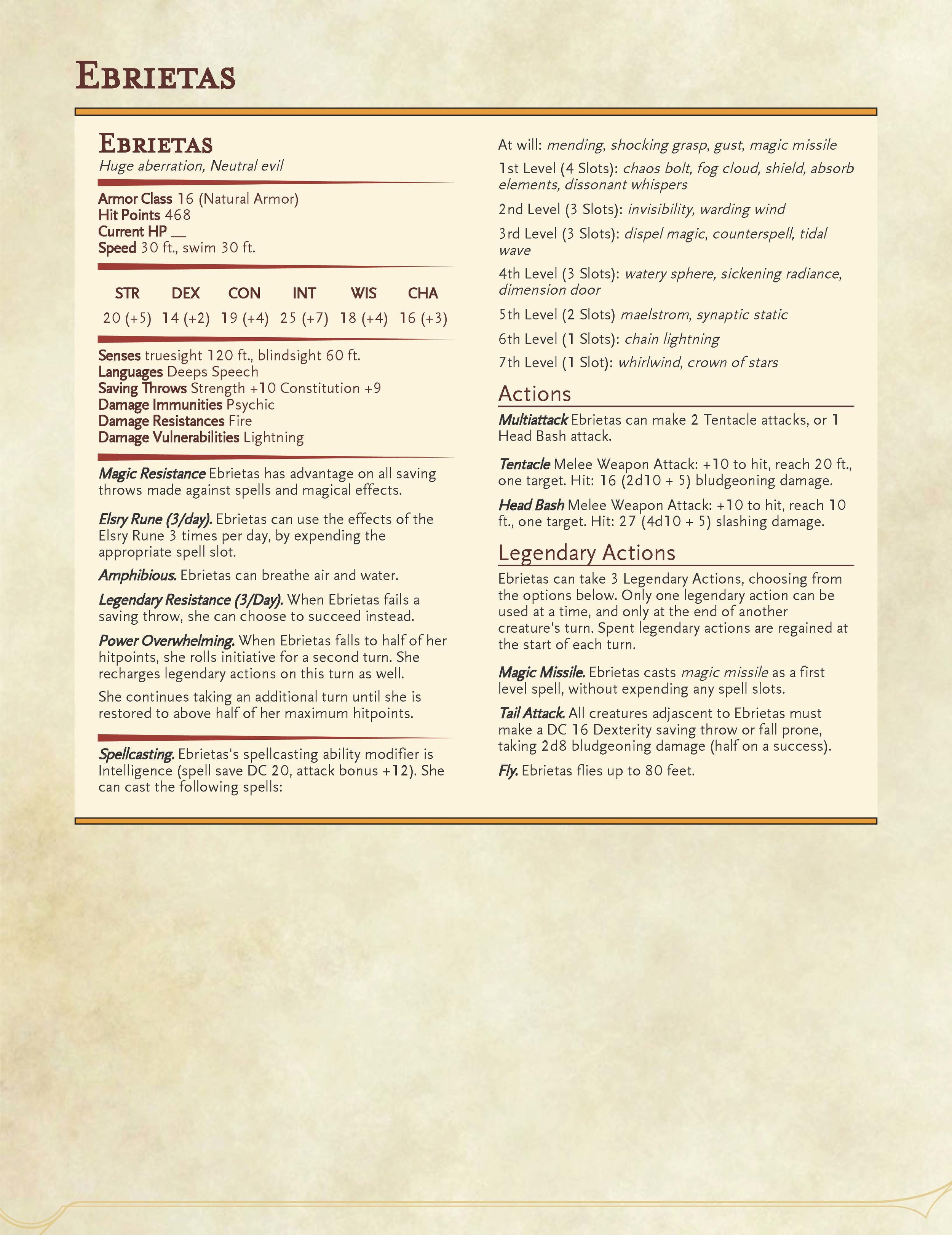A simple change to 5E's monster design
I was in the mood to write today, as I am every day, and was having trouble building momentum, as I do every day. It’s been two months since my last essay so I figure, why not type something up in order to get myself going? I was running my 5E West Marches Campaign a few weeks ago, and the players were headed to the base of several rogue scientists. It was about three days travel by air, so I had them roll on the aerial encounter chart 3 times, allowing the players to make some modifications thanks to specific characters they have within the party (a Ranger with a background in sailing).
Among finding a redhead woman in a barrel and a portal to the cloud realms, they have a very special aerial encounter. A cloud rushes to meet them, everything goes dark, and a warm, ambient light slowly builds around them. Passing through the cloud above the vessel is a creature I described as a six finned whale-like entity singing softly as it swims through the air. Its belly is covered by thousands of blue gemlike barnacles, hundreds of which fall off and onto the deck of the ship. The players took one look at their bountiful gift, shouted “man the harpoons”, and turned around to pursue. The combat was very short; the players quickly decided to flee, thanks to some encouragement by the whale.
The creature began its unhappy response to this unprovoked assault by slapping off the prow of the ship (using its tail). The players still might’ve continued their attack were it not for the whale’s second course of action; singing. Here’s the effect of its song:
After the party got hit by this, they turned around as quickly as possible. Fantastic! To be clear, I didn’t mind if they killed this thing, they would’ve gotten a huge bounty depending on how much of the whale’s carcass they could salvage. The whale on the other hand did mind, and I was pleased at its capacity to defend itself.
So why am I bringing all of this up? How often have you as a GM deployed some monster that causes fear, causes nausea, etc only to find that 5 out of your 6 players made their saving throw and nothing happens. The dragon appears on scene, roars in all of its terrifying might…and the PCs stand there, stoic and unfazed. Okay, maybe that’s not the actual fiction of the game. But it sure is annoying for the monster to bust out some tremendously destructive feature and…nothing happens, because the player succeeded. Now, I’m on the player side of the GM screen often enough to know the player still feels tension and relief when the monster’s big screw-you doesn’t do anything. The trouble is primarily on the GM side of the screen, where your impression is “oh, the monster did nothing”. It’s also annoying on a mechanical level. The monster attempts to do a thing, spends their action doing it, and nothing happens. Whether the encounter was random or designed, that’s incredibly annoying and disappointing. It just makes for bad gaming, frankly. It’s well known the 5e monster manual is 200 pages of “big sack of hitpoints that doesn’t do anything interesting, unless it’s casting a spell”. So in the instances where a monster uses a save-or-suck feature, your expectation of the monster to be interesting clashes with the reality of “they just wasted their round”.
Boring. Don’t do that. It’s a tremendous obstruction to running more lethal games. Imagine for the moment if we took all of the monsters with a “fear aura” style feature in the game, and edited them as follows. If you succeed on the saving throw to avoid becoming frightened, you take psychic damage. Maybe it’s only the first saving throw that produces this effect, folks who save later were punished enough with the frightened condition.
Think about it; the dragon pops out and roars at your players. They make their saving throws, and avoid being frightened! But the act of overpowering their natural instinct to flee was so intense it literally caused them harm. Gritty!
It also helps the mechanical side of things. A lot of the monster manual is diminished in its effectiveness because there are so many opportunities for the monsters to fail in doing anything. I don’t worry about whether a creature is too high of a CR to fight my players, but I like to know going into the combat how effective it’ll be. If there are huge gaps in the creature’s damage output and negative impact on the party, I’ll have literally no idea how tough of an encounter this will be. I can’t imagine how much more difficult that makes life for GMs who do design all of their encounters!
5E made a “damage is king” game. You’re not supposed to end a fight without the monsters either dropping to 0 HP, or fleeing because they took too much damage. So why are there all of these gaps in the monster’s destructive potential?
So, look at your monster manuals. Look at your homebrew monsters. Do you want them to be more enjoyable to run? Do you want them to feel more lethal? Pick a save-or-suck feature. Do this especially if failing its saving throw produces a condition. Now, add damage for succeeding the (at the very least initial) saving throw! We don’t even need to do any crazy math or make any charts for a rough estimate of how much damage it should be.. Just look at the damage the monster deals with an attack, and model it after one of those. Done! Easy.
You’re welcome. Oh, and here’s the creature’s full statblock, in case you wanted to use it. Yeah, it’s chunky.







